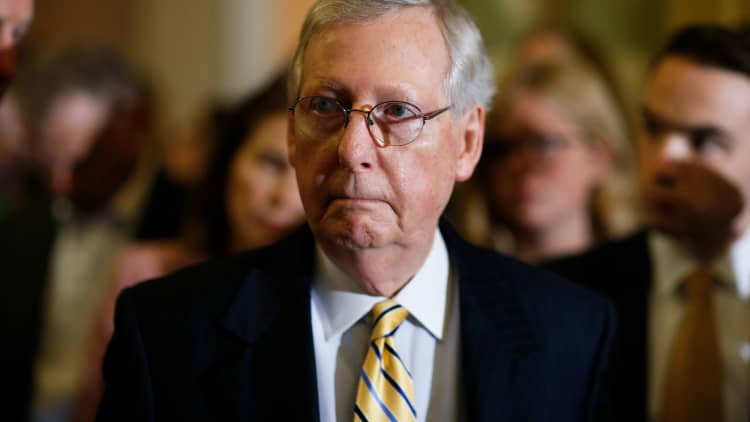
Senate Republicans on Thursday unveiled a plan which would chop the corporate tax rate and make broad tweaks to the individual tax system. It contains key differences from a bill working its way through the House.
GOP senators contend the tax system overhaul will ease the burden on middle-income Americans while encouraging companies to boost hiring and wages.
Trimming the tax burden on businesses and individuals has long been a Republican goal. With unified control of the White House and both chambers of Congress, the GOP aims to pass a tax reform plan this year, despite lingering challenges.
Issues facing GOP lawmakers include budget deficits generated by the deep cuts, opposition from blue-state House Republicans and backlash from Democrats who say the proposals will not go far enough to help middle-class workers.
Here are some of the key features of the Senate plan, much of which was outlined by the Senate Finance Committee:
- The proposal chops the corporate tax rate from 35 percent to 20 percent. It would delay the change until 2019, a source told CNBC. In the House bill, that measure would take effect next year.
- The Senate plan would keep seven individual income tax brackets, a source told CNBC. A 12 percent bracket would replace the current 15 percent, while the top rate would get cut slightly to 38.5 percent. The House plan would reduce the number of brackets to four.
- Like the House bill, the Senate proposal would nearly double the standard deduction to $12,000 for individuals and $24,000 for married couples.
- The Senate plan would eliminate federal deductions for state and local taxes. The House bill also has this.
- It would not change the mortgage interest deduction, which allows deductions on interest for up to $1 million in mortgage debt. The House bill caps that figure at $500,000.
- It keeps popular tax breaks for 401(k) retirement accounts and charitable contributions.
- It aims to reduce the burden on pass-through businesses by adding a deduction.
- The Senate plan increases the child tax credit from $1,000 to $1,650.
- The proposal doubles the exemption for the estate tax, or so-called death tax, but does not eliminate it. The House plan repeals the estate tax after six years.
The House Ways and Means Committee voted Thursday to advance its tax bill. Committee Chairman Rep. Kevin Brady, R-Texas, made changes to the proposal ahead of the vote.
House Majority Leader Kevin McCarthy, R-Calif., on Thursday said the full House would vote on the proposal next week.
Meanwhile, the Senate Finance Committee aims to start marking up, or debating and amending, a bill next week.
If the Senate and House pass separate tax bills, lawmakers will have to reconcile them. Republicans have set an end-of-the-year target to overhaul the U.S. tax system.
If three GOP senators oppose the plan, the chamber cannot pass it, assuming all Democrats and independents vote against it.
House lawmakers are searching for ways to reduce the budget deficits created by the bill to make it comply with budget rules. A tax proposal cannot add more than $1.5 trillion in deficits over 10 years under budget guidelines recently set by the Senate and House.
The Congressional Budget Office has estimated that a version of the House plan would add $1.7 trillion in deficits over a decade.
— CNBC's John Schoen contributed to this report.


